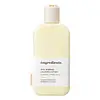What's inside
What's inside
 Key Ingredients
Key Ingredients

 Benefits
Benefits

 Concerns
Concerns

No concerns
 Ingredients Side-by-side
Ingredients Side-by-side

Water
Skin ConditioningGlycerin
HumectantCaprylic/Capric Triglyceride
MaskingIsopropyl Palmitate
EmollientPropylene Glycol
HumectantPropylene Glycol Dicaprylate/Dicaprate
EmollientGlyceryl Stearate
EmollientSteareth-100
Gel FormingMyristyl Myristate
EmollientAcrylates/C10-30 Alkyl Acrylate Crosspolymer
Emulsion StabilisingBenzoic Acid
MaskingCaprylyl Glycol
EmollientCarbomer
Emulsion StabilisingParfum
MaskingGlycine
BufferingGlycine Soja Seed Extract
Skin ConditioningOenothera Biennis Oil
EmollientPEG-32
HumectantPEG-400
Emulsion StabilisingPentyl Rhamnoside
Skin ConditioningSodium Hydroxide
BufferingTocopherol
AntioxidantTocopheryl Acetate
AntioxidantWater, Glycerin, Caprylic/Capric Triglyceride, Isopropyl Palmitate, Propylene Glycol, Propylene Glycol Dicaprylate/Dicaprate, Glyceryl Stearate, Steareth-100, Myristyl Myristate, Acrylates/C10-30 Alkyl Acrylate Crosspolymer, Benzoic Acid, Caprylyl Glycol, Carbomer, Parfum, Glycine, Glycine Soja Seed Extract, Oenothera Biennis Oil, PEG-32, PEG-400, Pentyl Rhamnoside, Sodium Hydroxide, Tocopherol, Tocopheryl Acetate
Water
Skin ConditioningGlycerin
HumectantPropanediol
SolventCaprylic/Capric Triglyceride
MaskingCetyl Ethylhexanoate
Emollient1,2-Hexanediol
Skin ConditioningGlyceryl Stearate
EmollientPhenyl Trimethicone
Skin ConditioningC14-22 Alcohols
Emulsion StabilisingPolysorbate 60
EmulsifyingArginine
MaskingCoptis Japonica Root Extract
Skin ConditioningCarbomer
Emulsion StabilisingButylene Glycol
HumectantCorchorus Olitorius Leaf Extract
Skin ConditioningDaucus Carota Sativa Root Extract
Skin ConditioningIlex Paraguariensis Leaf Extract
PerfumingBorago Officinalis Extract
EmollientC12-20 Alkyl Glucoside
EmulsifyingCentella Asiatica Extract
CleansingGlucose
HumectantPolyglyceryl-10 Laurate
Skin ConditioningEthylhexylglycerin
Skin ConditioningTripeptide-1
Skin ConditioningCopper Tripeptide-1
Skin ConditioningPalmitoyl Pentapeptide-4
Skin ConditioningPalmitoyl Tripeptide-1
Skin ConditioningHexapeptide-9
Skin ConditioningHexapeptide-11
Skin ConditioningAcetyl Tetrapeptide-2
Skin ConditioningAcetyl Tetrapeptide-5
HumectantPalmitoyl Tripeptide-5
Skin ConditioningWater, Glycerin, Propanediol, Caprylic/Capric Triglyceride, Cetyl Ethylhexanoate, 1,2-Hexanediol, Glyceryl Stearate, Phenyl Trimethicone, C14-22 Alcohols, Polysorbate 60, Arginine, Coptis Japonica Root Extract, Carbomer, Butylene Glycol, Corchorus Olitorius Leaf Extract, Daucus Carota Sativa Root Extract, Ilex Paraguariensis Leaf Extract, Borago Officinalis Extract, C12-20 Alkyl Glucoside, Centella Asiatica Extract, Glucose, Polyglyceryl-10 Laurate, Ethylhexylglycerin, Tripeptide-1, Copper Tripeptide-1, Palmitoyl Pentapeptide-4, Palmitoyl Tripeptide-1, Hexapeptide-9, Hexapeptide-11, Acetyl Tetrapeptide-2, Acetyl Tetrapeptide-5, Palmitoyl Tripeptide-5
 Reviews
Reviews

Ingredients Explained
These ingredients are found in both products.
Ingredients higher up in an ingredient list are typically present in a larger amount.
This ingredient is an emollient, solvent, and texture enhancer. It is considered a skin-softener by helping the skin prevent moisture loss.
It helps thicken a product's formula and makes it easier to spread by dissolving clumping compounds.
Caprylic Triglyceride is made by combining glycerin with coconut oil, forming a clear liquid.
While there is an assumption Caprylic Triglyceride can clog pores due to it being derived from coconut oil, there is no research supporting this.
Learn more about Caprylic/Capric TriglycerideCarbomer is a polymer of acrylic acid. Its main role is to create a gel consistency.
A high amount of carbomer can cause pilling or balling up of products. Don't worry, most products contain 1% or less of carbomer.
Glycerin is already naturally found in your skin. It helps moisturize and protect your skin.
A study from 2016 found glycerin to be more effective as a humectant than AHAs and hyaluronic acid.
As a humectant, it helps the skin stay hydrated by pulling moisture to your skin. The low molecular weight of glycerin allows it to pull moisture into the deeper layers of your skin.
Hydrated skin improves your skin barrier; Your skin barrier helps protect against irritants and bacteria.
Glycerin has also been found to have antimicrobial and antiviral properties. Due to these properties, glycerin is often used in wound and burn treatments.
In cosmetics, glycerin is usually derived from plants such as soybean or palm. However, it can also be sourced from animals, such as tallow or animal fat.
This ingredient is organic, colorless, odorless, and non-toxic.
Glycerin is the name for this ingredient in American English. British English uses Glycerol/Glycerine.
Learn more about GlycerinGlyceryl Stearate is a mix of glycerin and stearic acid.
It is used to stabilize the mixing of water and oil ingredients. By preventing these ingredients from separating, it can help elongate shelf life. It can also help thicken the product's texture.
As an emollient, it helps soften skin and supports barrier-replenishing ingredients.
In cosmetics, Glyceryl Stearate is often made from vegetable oils or synthetically produced.
This ingredient may not be fungal-acne safe
Fun fact: The human body also creates Glyceryl Stearate naturally.
Learn more about Glyceryl StearateWater. It's the most common cosmetic ingredient of all. You'll usually see it at the top of ingredient lists, meaning that it makes up the largest part of the product.
So why is it so popular? Water most often acts as a solvent - this means that it helps dissolve other ingredients into the formulation.
You'll also recognize water as that liquid we all need to stay alive. If you see this, drink a glass of water. Stay hydrated!
Learn more about Water